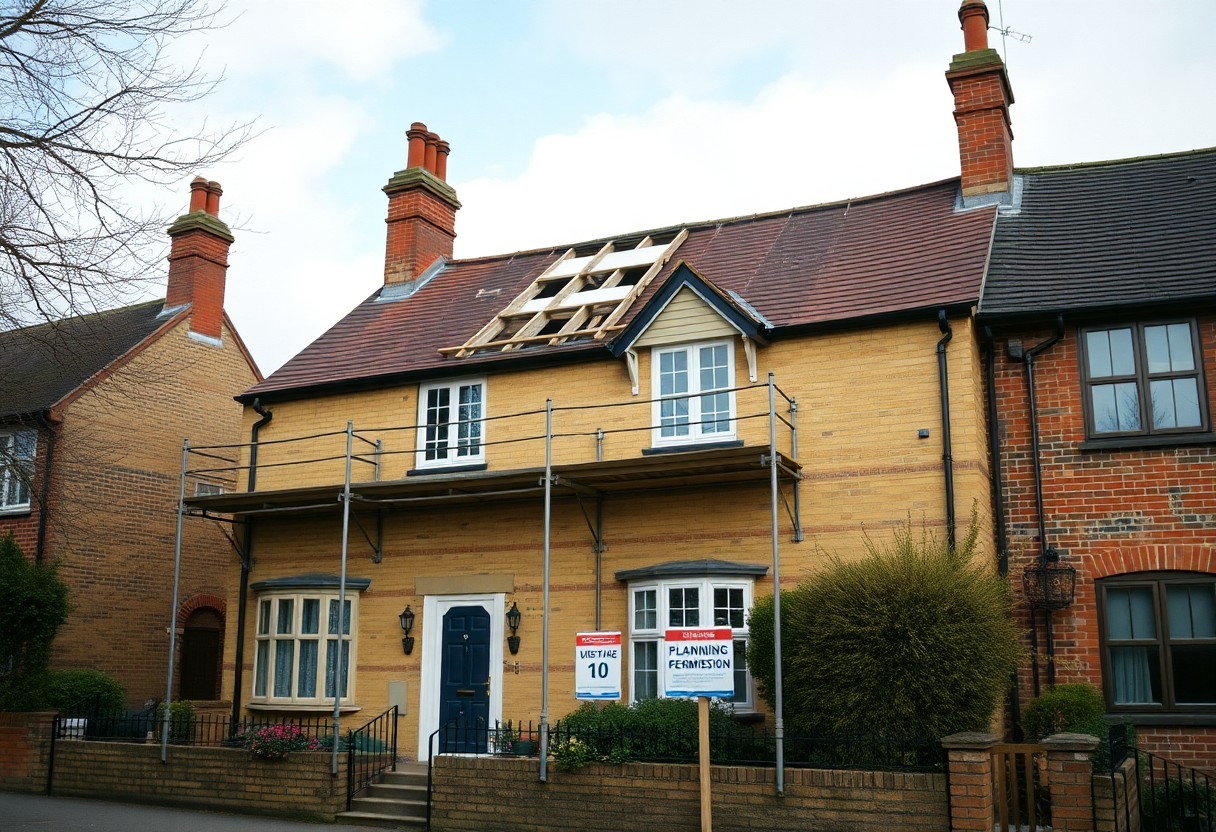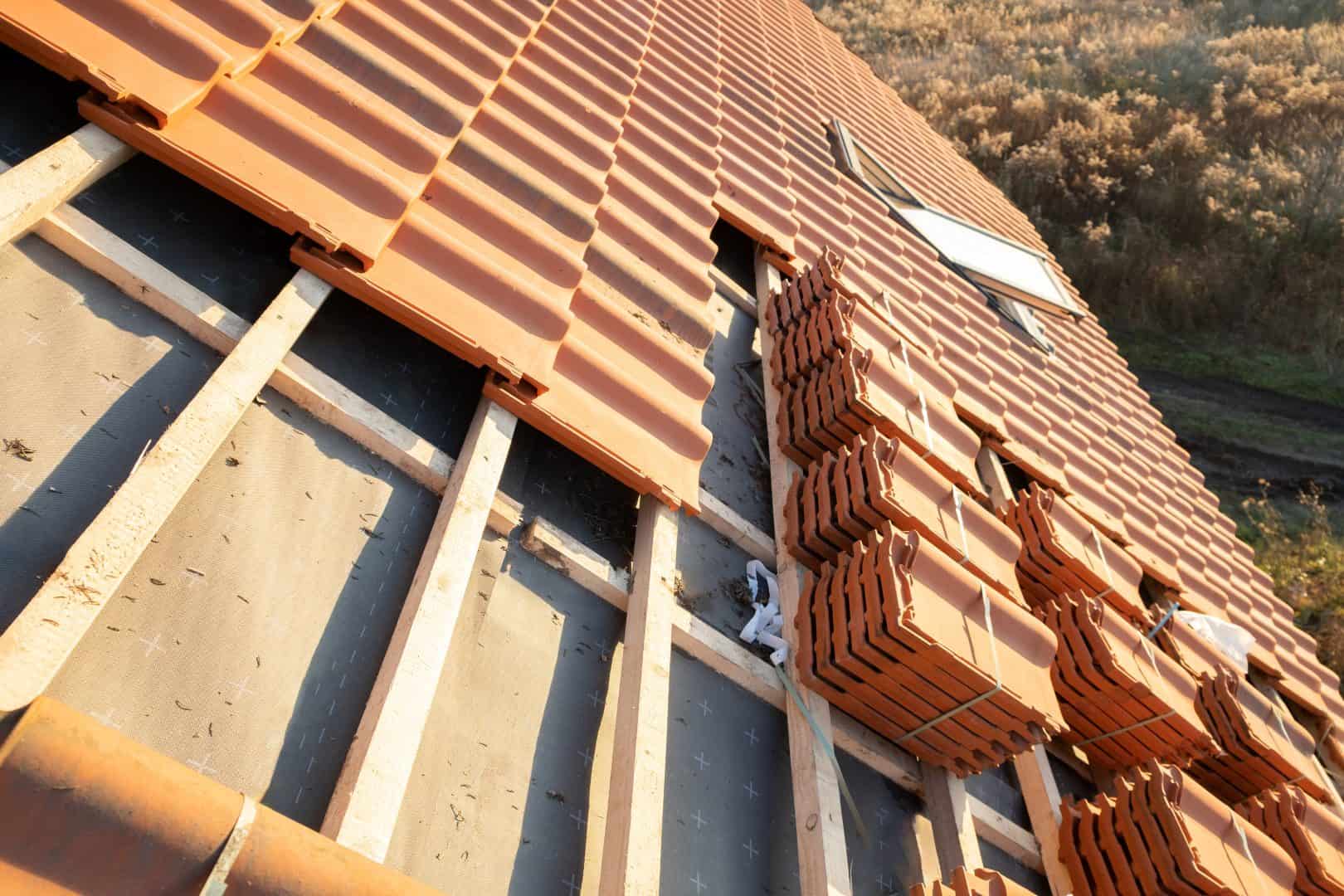Do I need planning permission for a new roof in Cambridge?
Fill Out The Form And We'll Get Back To You

You may be wondering if planning permission is necessary for your new roof in Cambridge. The answer is that it often depends on various factors, including the type of roof, the materials used, and whether your property is listed or situated within a conservation area. Understanding these regulations is necessary to ensure your renovation project complies with local laws, avoiding potential delays or penalties. In this post, we will explore the key considerations to help you determine if planning permission is required for your roofing project.
Understanding Planning Permission
A fundamental aspect of property development is understanding planning permission, which governs the alterations and constructions you may wish to undertake on your property. In Cambridge, specific rules dictate when you need planning consent for changes such as a new roof. It is vital to be aware of local regulations before commencing your project to avoid potential legal issues.
What is Planning Permission?
Around the UK, planning permission is a legal requirement that ensures any construction or development aligns with local and national policies. It helps maintain the character of neighbourhoods and prevents inappropriate developments. Applying for permission involves submitting detailed plans to your local council for consideration.
Types of Developments Requiring Permission
In Cambridge, various types of developments typically require planning permission. These include:
- New builds or extensions
- Major alterations to existing structures
- Changes in building use
- Significant landscaping projects
- Works affecting listed buildings or conservation areas
Knowing the specific permissions necessary for your project can save you time and potential expenses.
| Type of Development | Planning Permission Required |
|---|---|
| New Roof Installation | Depends on the design and materials |
| Roof Extensions | Typically requires planning permission |
| Replacement with Similar Design | May be exempt under permitted development |
| Conservation Area Adjustments | Requires permission |
| Listed Building Modifications | Strictly requires permission |
By understanding the types of developments that require planning permission, you can more effectively navigate the planning process. Knowing what constitutes a significant change can also help you determine if your roofing project is subject to these regulations.
- Assess your proposed changes against local regulations
- Consult with professionals experienced in local planning
- Explore the option of permitted development rights
- Review your property’s location status
- Prepare necessary documentation promptly
Consequently, being adequately informed about your project’s requirements will ensure a smoother planning process and enhance the chances of approval.
| Development Type | Planning Requirement |
|---|---|
| Minor Structural Changes | May not need permission |
| New Building Additions | Requires full planning application |
| Structural Alterations | Often need assessment |
| Utilising Roof Space | Possibly requires permission |
| Commercial Roof Changes | Usually needs planning consent |
Roof Types and Planning Regulations
There’s a variety of roof types, each potentially subject to different planning regulations. When considering a new roof, you should be aware of:
- Flat Roofs
- Pitched Roofs
- Material Choices
- Environmental Impact
- Heritage Considerations
Perceiving these aspects can aid in determining whether you need planning permission.
| Roof Type | Planning Permission Needed? |
|---|---|
| Flat Roofs | Often not required |
| Pitched Roofs | Sometimes required |
| Green Roofs | Generally not required |
| Materials | Specific types may need permission |
| Heritage Buildings | Permission likely necessary |
Flat Roofs
Between traditional and modern architecture, flat roofs have become increasingly popular. In many cases, you won’t need planning permission for a flat roof as long as the structure adheres to specific guidelines, such as height restrictions and building regulations. However, if the new roof changes the overall aesthetics significantly or if it impacts a conservation area, it may be worth checking with your local council.
Pitched Roofs
Before proceeding with a pitched roof, it’s wise to consider whether planning permission is necessary. Pitched roofs, which are often used for residential extensions or new builds, may require permission based on design or height altering the skyline. Local regulations can also vary, making it imperative to consult with your local planning authority.
At the same time, planning regulations surrounding pitched roofs can be more stringent due to potential impacts on nearby properties and the overall neighbourhood context. Consideration should also be given to aspects such as the choice of roofing materials and style, particularly if your property is in a conservation or historic area, as regulations may dictate certain design features or colours. Engaging with local authorities early in the process will help you navigate any planning complexities effectively.
Local Planning Authority in Cambridge
Any changes you plan for your roof will require consulting the Local Planning Authority, which in Cambridge is responsible for overseeing building regulations. You can find detailed guidance on the requirements for building permits by visiting the Building Permits – City of Cambridge, MA. Understanding their regulations will ensure that your project proceeds smoothly, avoiding potential delays or fines.
Role of the Cambridge City Council
Cambridge City Council plays a significant part in overseeing planning permissions and ensuring compliance with local regulations. Their role includes evaluating applications to maintain the character and safety of the environment while allowing for necessary development. Engaging with the Council will help you navigate the regulations specific to your roof project.
Importance of Local Regulations
The regulations set forth by the Local Planning Authority exist to protect both you and your neighbourhood. These rules ensure that any modifications you make align with the overall aesthetic and safety standards of the area. Adhering to these guidelines is vital for preventing future disputes and maintaining property value.
Also, local regulations often address aspects such as the materials used and the height of your roof, which can directly impact your home’s design and functionality. Failing to comply may result in enforcement action and the need to alter or even reverse your changes. Thus, understanding and following these regulations can save you time, money, and hassle in the long run.
Permitted Development Rights
Now, if you’re considering a new roof in Cambridge, you should be aware of the permitted development rights that may apply to your property. These rights can allow certain changes without the need for formal planning permission. For detailed guidance, you can visit Planning Permission – Cambridge ….
Overview of Permitted Development
To benefit from permitted development, your project must comply with specific criteria. Typically, the changes must be minor and not significantly alter the external appearance or dimensions of your property.
Exceptions and Limitations
By understanding the exceptions and limitations, you can better navigate the planning requirements for your new roof. Certain properties, such as those in conservation areas, may have stricter regulations.
Considering your property’s specific circumstances, it’s important to take into account any constraints that may limit your ability to undertake roof alterations. For example, if your home is listed or situated within a conservation area, you may need to apply for planning permission, even for what might normally be considered permissible changes. Always check with your local council to see how these factors apply to your case.
How to Apply for Planning Permission
Your first step in applying for planning permission is to submit your application to your local council. You can gather information about whether does a replacement roof need planning permission and … by reviewing relevant guidelines provided by the council. Be thorough in your application to enhance your chances of approval.
Application Process
Permission for planning can typically be obtained through a standard application process. This involves filling out forms and providing necessary details about your proposed roof project. Make sure to check any specific requirements set by your local council to ensure a smooth submission.
Necessary Documentation
For your planning permission application, you will need to prepare various documents that provide relevant details about your project. These might include site plans, location maps, and design drawings.
Apply for your planning permission with all required documents, ensuring everything is accurate and complete. Incomplete submissions can lead to delays or refusals. It’s advisable to review the specific documentation needed for your project as stipulated by your local council, as this can vary depending on your circumstances.
Consequences of Not Obtaining Permission
Once again, failing to secure planning permission for your new roof can lead to significant issues. Authorities may consider your roofing project unlawful, prompting a series of repercussions that could affect your property and financial wellbeing. It is imperative to understand these potential consequences before proceeding with any construction work.
Enforcement Action
For those who neglect to obtain the necessary planning permissions, local authorities have the power to initiate enforcement actions. This may include issuing a formal notice requiring you to rectify the situation, which can involve removing or altering the unauthorised work. Ignoring such notices can exacerbate the situation, leading to further legal complications.
Fines and Remediation
For individuals who bypass the planning permission process, the potential for fines and the necessity for remediation cannot be overlooked. Local councils can impose financial penalties, and you may be obligated to restore your property to its original state, which can incur additional expenses.
Considering the implications, it is wise to appreciate the financial burden of fines and the costs associated with remediation. The expense of restoring your roof to align with local regulations can substantially surpass the cost of obtaining permission in the first place. By taking proactive steps and securing the necessary permissions, you can avoid these costly pitfalls and ensure compliance with local planning regulations.
Conclusion
From above, you should ascertain whether your new roof project in Cambridge requires planning permission. Factors such as the scale of the work, the type of property, and local regulations influence this requirement. Typically, minor repairs and replacements may not need permission, while larger alterations could. It is advisable to consult your local council or a planning professional to ensure compliance with the specific guidelines relevant to your property and the surrounding area.
FAQ
Q: Do I need planning permission for a new roof in Cambridge?
A: In most cases, you do not need planning permission to replace an existing roof in Cambridge, especially if you are using the same materials as the original. However, if you plan to alter the roof’s shape or height significantly, or if your property is in a conservation area or is a listed building, you will likely need to seek planning permission.
Q: What factors can affect whether I need planning permission for roofing work?
A: Several factors can influence the need for planning permission. These include the type of property (e.g., detached, semi-detached, or terraced), the location of the property, the existing height and pitch of the roof, and whether or not the alterations would affect neighbouring properties. Additionally, special regulations apply to properties in conservation areas or those designated as listed buildings, so it is wise to consult with the local planning authority for guidance.
Q: How can I check if my property is in a conservation area or subject to specific regulations?
A: To determine if your property is in a conservation area or subject to specific regulations, you can check the Cambridge City Council’s official website. They provide information on conservation areas, listed buildings, and relevant planning policies. Alternatively, you may contact the planning department directly for assistance in clarifying any concerns regarding your roofing project and its compliance with local regulations.
Re-Roof of Bungalow
The guys made a fantastic job of replacing the roof on our bunglaow. They were fasy, relaible and excellent value for money.
Chimney Removal
We employed Wrights Roofs to take down our very old chimney – tht had seen better days. They carefully removed and made good the area where the chimney was. Really impressed.
New Roof
We had an extension built and Wrights came and put a new roof on. They were brilliant, no fuss, great value for money. Thank you.
Roofs, Flat Roofs Chimneys and Solar Panels
If you need roof work on your home, please complete the form or call us today.

